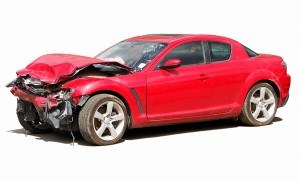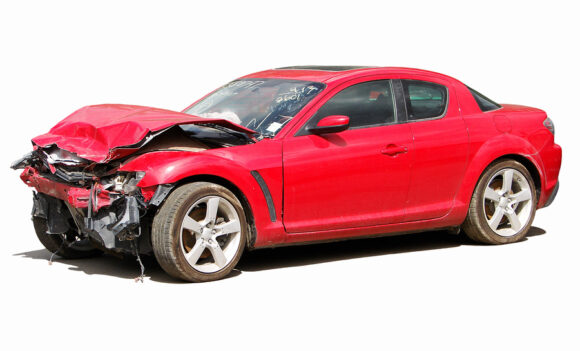In the past decade, many courts and state legislatures have considered the issue of whether automobile policies provide coverage for diminished value of a repaired vehicle after a collision has occurred.
Courts that have considered the issue have reached varying results.
An answer to the question of coverage requires a determination of whether the insurance policy requires the insurer to repair a car so that it is in substantially the same functional condition it was in pre-accident, or if the insurance policy, instead, requires the insurer to repair a car so that it has the same value it had pre-accident.
Recently the Supreme Court of Washington adopted the minority view holding that the meaning of “repair” included an accounting of pre- and post-accident value. Moeller v. Farmers Ins. Co. of Washington, 173 Wash.2d 264, 274, 267 P.3d 998, 1002 (2012). The Court was bitterly divided on the issue resulting in a 5:4 decision. The legal arguments used by the majority and dissent are a microcosm of the overall analytic debate.
The majority affirmed the Court of Appeals decision finding that the phrase “like kind and quality” means “a restoration of appearance, function, and value.” Therefore, the insurer was required to repair the vehicle and pay the insured the difference in value between the repaired vehicle and its pre-accident worth.
The Court rejected Farmers’ argument that diminished value loss was excluded by the policy’s limit of liability and payment of loss provisions. Farmers argued that a car is either a total loss or it is repairable and that the insurer meets its obligation to repair when it returns the car to good and useable condition. Further, Farmers maintained that the phrase “like kind and quality” meant that if the insurer elected to repair a car and replace parts in doing so the replacement parts must be of “like kind and quality,” or if the insurer elects to replace a damaged car, then the replacement must be of “like kind and quality.” The “like kind and quality” concept had nothing to do with diminished value. Additionally, Farmers relied upon the policy’s payment of loss provision which gave Farmers the option of compensating loss by either money or repair or replacement but did not allow for a combination of the three.
The majority of the Court found that Farmers’ arguments “ignore[d] important presumptions in favor of the insurance consumer inherent in the rules of construction regarding insurance contracts.” Principal among these is the rule that a contract of insurance must be read as an average person would read it. The “limiting language relied upon by Farmers did not convey to the average policyholder that the value of coverage may be less if Farmers repaired a vehicle rather than replacing or totaling it.
A reasonable insured would expect to be placed in the same position he or she enjoyed before the accident following the repair of the vehicle. Straining the concept of “like kind and quality,” the Court found that the phrase applied to both replacement and repair. In a dismissive statement, the Court observed that Farmers did not contend that in replacing a damaged car or damaged equipment, an acceptable substitute would be a replacement that had suffered an accident. Such an approach would put the insured in the position he or she found themselves in after the accident, not before.
The majority of the Court also rejected Farmers’ argument that the interpretation of the Court would result in Farmers’ losing its option to repair instead of “totaling out” the car.
The Court responded by indicating that Farmers retained the option but that either option (repair or totaling) must result in coverage of equal value to the insured. Playing word logic, the majority noted that while the payment of loss provision of the policy was phrased in the disjunctive, giving Farmers the option to either compensate by monetary payment or repair, the utilization of the word “or” did not render the options mutually exclusive. By way of example, the majority of the Court noted that the policy recognized that loss may be recouped when a car is damaged or stolen. Therefore, a car could be both damaged and stolen, with losses stemming from each occurrence. Using this logic, the Court found that “[i]t was reasonable to anticipate situations where some losses are repaired, others losses are replaced, and some losses are compensated with cash, as when a heavily customized car is damaged.” In the latter situation the insurer may fix the car while replacing or paying cash for the custom equipment. Because of this, the plain language of the payment of loss provision did not foreclose coverage for diminished value when repairs were made.
The dissent comprised four of the Justices. The dissent accused the majority of rewriting the parties’ insurance contract by applying principles of tort law instead of rules of contract construction. The focus of the inquiry was necessarily tied to the actual language of the contract itself. The question addressed by the dissent was whether the insurer, who elects to repair a damaged vehicle and does so to the industry standard, is required to also pay diminution in value. To answer that question, it was necessary “for the Court to examine the limits of liability provision because, although diminished value may constitute a loss under an insurance policy’s coverage provision, an insurance company’s responsibility to compensate for that loss is nevertheless “circumscribed” by the limits of liability and payment of loss provisions.”
The term “repair” used in the limit of liability provision was undefined by the policy and, therefore, the Court was required to give the term its plain, ordinary and popular meaning. The dissent concluded that the relevant common meaning of “repair” was “to restore by replacing a part or putting together what is torn or broken: fix, mend. The dissent found that under that definition, Farmers “’repairs’ a damaged vehicle when it returns the vehicle to substantially the same physical condition that it was in prior to the accident by fixing and replacing damaged parts.” Under “repair” the insurer is not required to restore the vehicle to factory condition or even to the condition of the vehicle before the accident. The insurer is not required to restore the vehicle to its pre-accident market value.
The dissent criticized the majority view by pointing out that while diminution in value can be compensated, it cannot be “repaired” or “replaced.” The meaning of “repair” was tortured by extending it to damage that could not be repaired given its nature. This dissent pointed out that “[t]he majority decision is based on the fallacy that collision damages may be repaired and paid for by the insurer, but that damage remains that cannot be repaired, e.g., weakened metal, and therefore the insurer must also pay for diminution in value. The policy provides an either/or proposition. Either repair or replacement—not both.”
According to the dissent, the surrounding context for the phrase “like kind and quality” indicated that it applied only to replacement—not repair—of damaged vehicles. The phrase “repair … with other of like kind and quality” is nonsensical, indicating that like kind and quality was not meant to modify repair. The dissent found that the phrase “like kind and quality” did not mean equal value. The term “Quality” was modified by the term “like,” which the average purchaser of insurance would understand to mean “the same as or similar to.”
Next, the majority noted that the clear contractual language of both the payment of loss provision and the limits of liability provision were phrased in the disjunctive and therefore contemplated two distinct options: repairing a damaged vehicle or making a monetary payment to the insured. The majority mistakenly concluded that the insurance company was required to both repair the vehicle and make a monetary payment to the insured. However, the dissent pointed out that the insurance policy contained no such requirement. The policy language allowing the insurer to choose between repairing or paying cash value for a damaged vehicle would be meaningless if the insurer were required to repair the vehicle and compensate the insured for diminution in value.
The Moeller dissent observed that the “overwhelming majority of courts addressing this issue have concluded that similarly worded limitations of liability provisions require the insurer to return the vehicle to substantially the same physical condition that it was in prior to the accident but do not require the insurer to return the vehicle to its pre-accident market value.”
The Washington Supreme Court’s decision in Moeller provides a representative look on the two sides of the legal analysis of this issue. The decision is an excellent primer to any claim adjuster wanting to acquaint themselves with the arguments, pro and con, regarding coverage for diminution in value after post-accident repairs have occurred.
Was this article valuable?
Here are more articles you may enjoy.



 Billionaire NFL Owner Suing Over Billboards Near His SoFi Stadium
Billionaire NFL Owner Suing Over Billboards Near His SoFi Stadium  California Bill Would Require Insurer Claims Handling Plans, And Double Penalties
California Bill Would Require Insurer Claims Handling Plans, And Double Penalties  US Lawmaker Unveils Bill Requiring Manual Car-Door Releases
US Lawmaker Unveils Bill Requiring Manual Car-Door Releases  OpenAI And Microsoft Sued Over Murder-Suicide Blamed on ChatGPT
OpenAI And Microsoft Sued Over Murder-Suicide Blamed on ChatGPT 